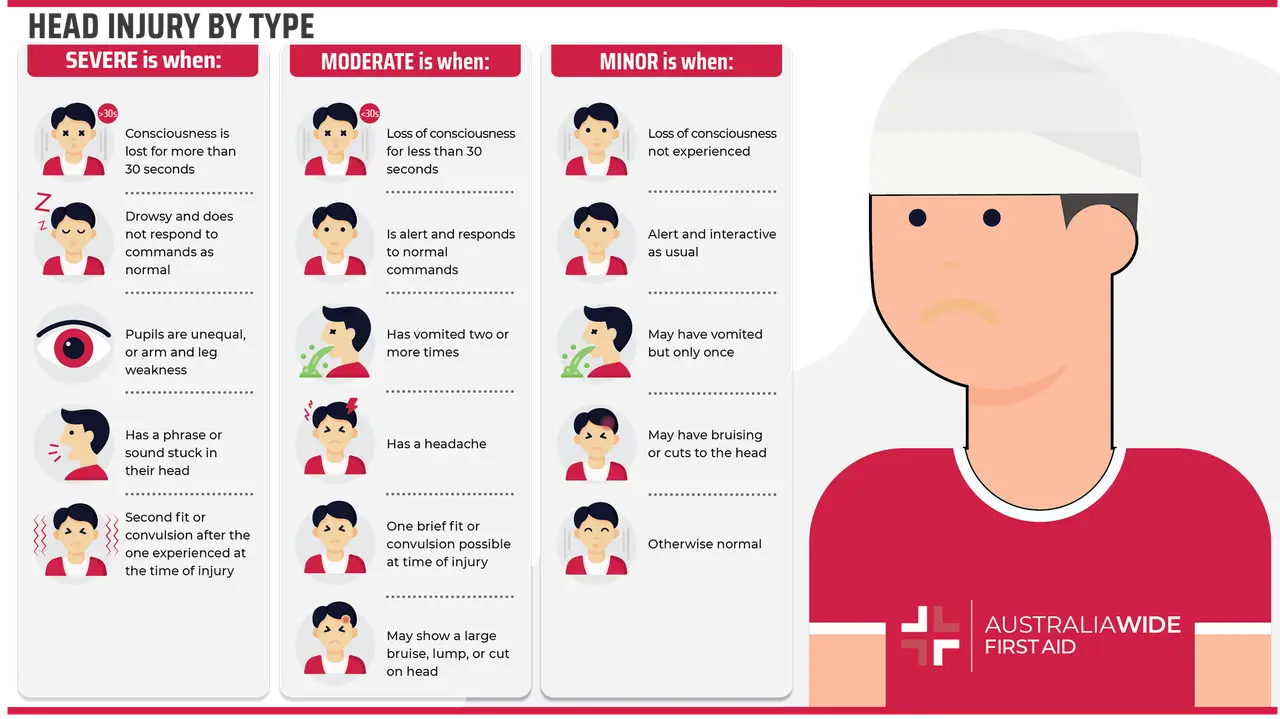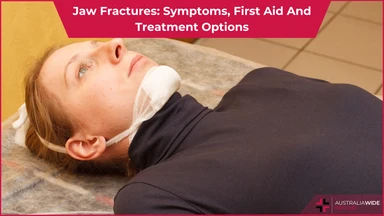Head Injuries


Head injuries can be assigned one of 3 basic categories — Severe, Moderate, and Minor — according to the signs and symptoms.
The following information is a guide only. As advised in the section under The first 48 hours… below, please seek emergency medical attention appropriately.
A head injury should be reported to a doctor or emergency department if any of the following symptoms occur during the first 48 hours:
Bruising and swelling can come from even minor bangs to the head. This is due to the scalp having good blood supply and there being little in the way of padding between skin and skull to absorb the knock. The swelling can be managed to some extent by the application of ice to the injury site. If ice is not available, a packet of frozen peas will do the job.
Wrap in a damp cloth — do not place frozen items directly on the skin.
The swelling should go down quite quickly, leaving the discoloured bruise and some tenderness. If the swelling remains undiminished, seek medical advice.
Blood supply to the scalp is good, so cuts to the scalp will bleed a lot. Place a clean dressing over the cut and apply pressure to it for 5 to 10 minutes. After 10 minutes, if the bleeding hasn’t stopped, seeking medical advice is recommended.
It can be expected that a cut more than 1cm in length will recover more readily when treated by a medical professional.
Problems not detected at first after a minor head injury, can emerge later. Be alert to the possibility of these symptoms emerging in the following weeks:
Disclaimer: This article is for the purposes of general education only. In the case of head trauma, please consult a medical professional or your closest emergency department. Call 000 immediately for assistance or if you are unsure how to proceed safely.

March 6, 2025
Falls are one of the most common causes of injury, particularly among children and older adults. Whether it’s a simple trip or a serious fall from height, knowing how to administer first aid can prevent further injury and, in some cases, save a life.

October 1, 2024
The musculoskeletal system is the foundation of human movement, support, and protection, playing a critical role in our ability to perform everyday tasks. Understanding the components and functions of the musculoskeletal system is essential for preventing injuries and managing conditions that may arise, particularly in workplaces where manual handling tasks are common.

August 28, 2024
A jaw fracture is a break or crack in the jawbone. This type of injury can occur due to various reasons and may result in considerable pain and difficulty in performing everyday activities like eating and speaking.